I'll never forget my first taste of Sinambong (Patupat) at the colorful Kannawidan Festival in Ilocos Norte. As I wandered through the bustling food stalls with my friend, the sight of these diamond-shaped rice cakes hanging to dry, glistening with sugarcane syrup, caught my eye.
The vendor, an elderly Ilocana, shared how she learned this recipe from her own grandmother, carefully weaving each coconut leaf pouch by hand before filling them with sticky rice. That first bite was pure magic – the perfectly chewy malagkit rice infused with the natural sweetness of sugarcane took me right back to my childhood memories of traditional Filipino merienda.
Today, I'm excited to share this authentic Ilocano delicacy that's been passed down through generations. While it takes some patience to master the leaf-weaving technique, I promise the end result is worth every minute – a truly special kakanin that will transport you straight to the heart of Ilocos.
Jump to:

Why You'll Love This Recipe
- Authentic family recipe passed down through generations
- Creates a naturally sweet dessert without added refined sugar
- Uses traditional weaving techniques that preserve Filipino culture
- Perfect make-ahead dessert that improves in flavor over time
- Great for special occasions and cultural celebrations
Ingredients
These three simple ingredients create magic together through traditional wisdom. Glutinous rice forms the perfect chewy base that absorbs flavor beautifully while holding its shape.
Fresh sugarcane juice provides natural sweetness without refined sugar, creating that distinctive golden color and rich caramel notes during the long cooking process. Young coconut or buri leaves aren't just packaging, they infuse the rice with subtle herbal aromas while allowing the perfect amount of syrup absorption.
This minimalist approach highlights the ingenious cooking techniques of Ilocano ancestors who created extraordinary delicacies from everyday ingredients found in their environment.
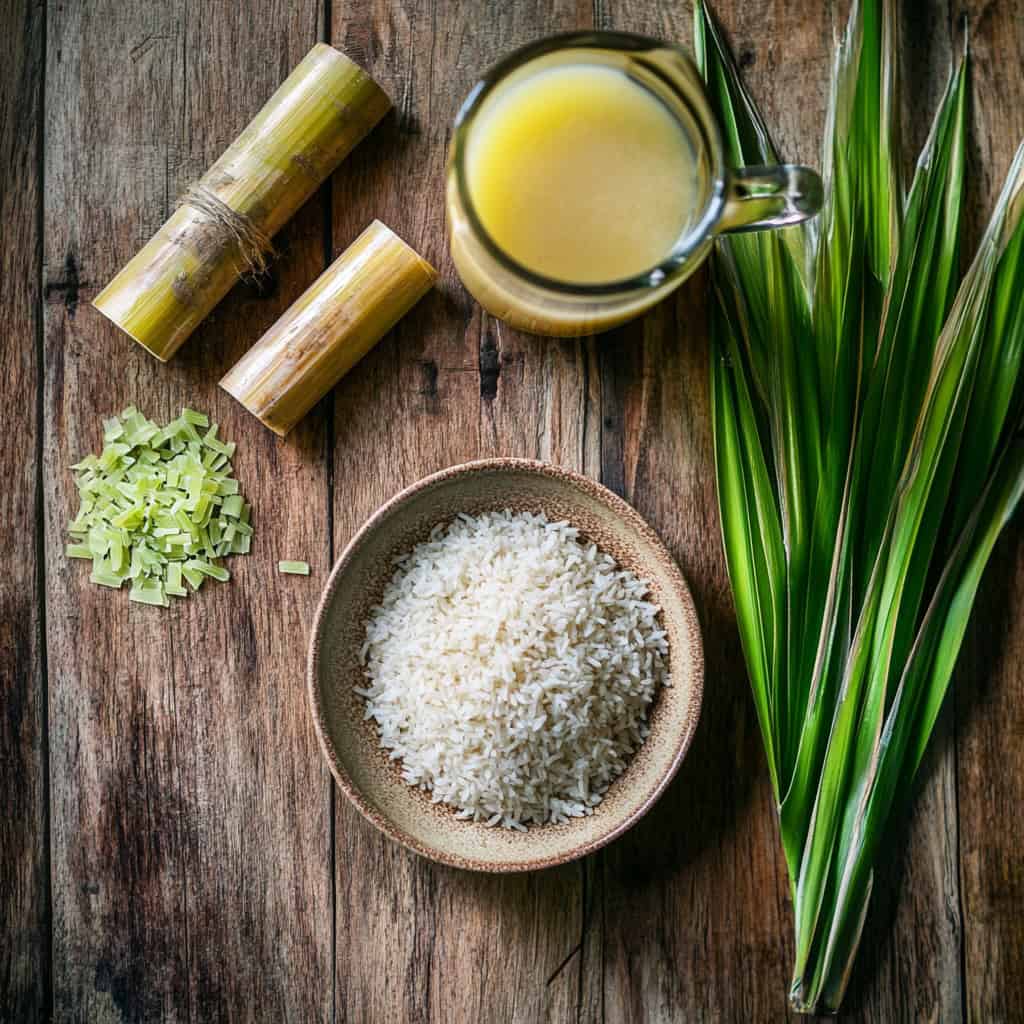
- 5 cups glutinous rice (malagkit/bigas malagkit/diket)
- 15 cups fresh sugarcane juice (katas ng tubo/digos ti unas)
- Young coconut leaves or buri leaves for wrapping
Equipment
- Large carajay or heavy-bottomed pot: For boiling sugarcane juice and cooking the rice pouches thoroughly
- Bamboo splices: Essential for securing the pouches during the long cooking process
- Fine-mesh strainer: Removes impurities from the sugarcane juice for a clean, clear syrup
- Heat-resistant tongs: Safely handles the hot pouches when transferring them in and out of the boiling syrup
- Cooling rack: Provides proper air circulation for draining excess syrup
- Sharp knife: Necessary for preparing and trimming the leaves for weaving
- Clean kitchen twine: Serves as a backup for securing pouches if the leaves break
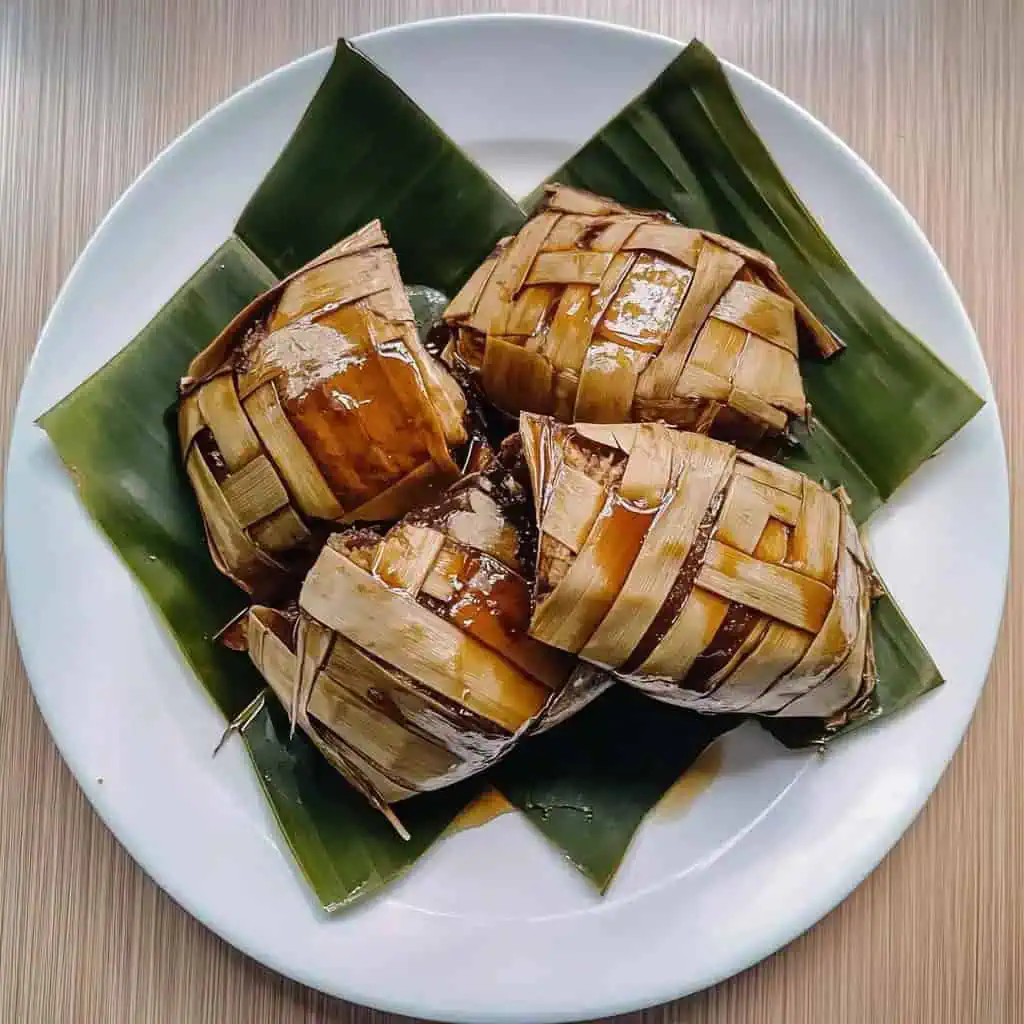
How To Make
- Prepare the leaves: Clean your coconut or buri leaves by wiping them with a damp cloth. Weave these leaves into pouches about the size of your palm, leaving a small opening at one end. Make sure your weaving is tight so the rice won't fall out when cooking.
- Fill the pouches: Fill each woven pouch halfway with uncooked sticky rice. Don't overfill - the rice needs room to expand. Tie each pouch closed with a tight knot using the extra leaf at the opening. Group several pouches together and secure them with bamboo strips.
- Prepare the sugarcane juice: Get your large pot ready and pour in the sugarcane juice. Bring it to a strong boil over medium-high heat. As it heats up, you'll see some particles floating on top - remove these with a strainer to get a clean syrup.
- First cooking phase: Lower your rice pouches into the boiling sugarcane juice. Make sure they're completely covered by the liquid. Let them cook for one hour. You can check if the rice is done by gently pressing the pouch - it should feel soft, not hard.
- Reduce the syrup: Keep cooking the sugarcane juice until it gets thicker and turns a golden brown color. This will make your Sinambong sweeter. Put the cooked rice pouches back into this thickened syrup and cook for another 30-50 minutes on low heat.
- Drain the pouches: After cooking, lift the pouches out carefully and hang them up to let the extra syrup drip off. Leave them hanging for about 15 minutes. You can use the extra leaf strip you left during weaving to hang them.
- Rest before serving: Let your Sinambong cool down for 30 minutes before eating. When you unwrap them, they should be shiny and slightly chewy - perfect for sharing with family and friends.
Remember: Patience is key when making Sinambong. Take your time with each step, especially the weaving and cooking in syrup. Your effort will be rewarded with a delicious, traditional Filipino treat.

Tips from Lola's Kitchen
- Select young, pliable leaves for easier weaving and better pouch integrity
- Soak leaves briefly in warm water to increase flexibility and prevent tearing
- Test rice doneness by gently pressing through the pouch rather than opening it
- The syrup is ready when it coats the back of a spoon and drips slowly
- Start preparation early morning when leaves are freshest and more flexible
- Keep the sugarcane juice boiling gently, not vigorously, to prevent pouches from breaking
- Watch the color change of the syrup – it should reach a rich amber color for authentic flavor
- Allow the pouches to hang and drip completely for the perfect texture
Substitutions
- Leaves: If coconut or buri leaves are unavailable, banana leaves can work, though they give a different flavor and are less traditional
- Sugarcane Juice: In a pinch, you can substitute with a mixture of muscovado sugar and water (1:3 ratio)
- Glutinous Rice: Japanese sweet rice can be used in emergencies, though it produces a slightly different texture
- Bamboo Strips: Food-grade twine or unflavored dental floss can secure the pouches if bamboo isn't available
- Carajay: Any large, heavy-bottomed pot will work, though traditional clay pots impart a subtle earthy flavor
Troubleshooting
- Rice still hard after cooking: The pouches may be too tightly packed. Next time, fill them less and extend cooking time by 15-minute intervals until done.
- Pouches opening during cooking: Double-knot the leaves or reinforce with kitchen twine. Make sure your weaving pattern is tight and secure.
- Syrup too thin: Continue cooking until it reaches a honey-like consistency. The reduction process may take longer depending on your pot size and heat level.
- Leaves breaking during weaving: Use younger leaves or soak them longer before weaving. Practice the weaving technique on scrap leaves first.
- Sinambong too sweet: Balance the sweetness by serving with a hot, slightly bitter beverage like black coffee or ginger tea.
- Pouches floating to the surface: Use a heat-safe plate to weigh them down and keep them submerged during cooking.
Storage & Reheating
- Room Temperature: Keeps well for 2-3 days in a covered container away from direct sunlight
- Refrigerator: Can be stored for up to 1 week in an airtight container
- Freezer: Not recommended as freezing changes the texture of the rice significantly
- Reheating: Steam for 5 minutes or microwave for 30 seconds with a damp paper towel covering
- Best served: At room temperature after allowing refrigerated Sinambong to warm naturally
- Storage tip: Keep the leaf wrapping intact until ready to eat to maintain moisture and flavor
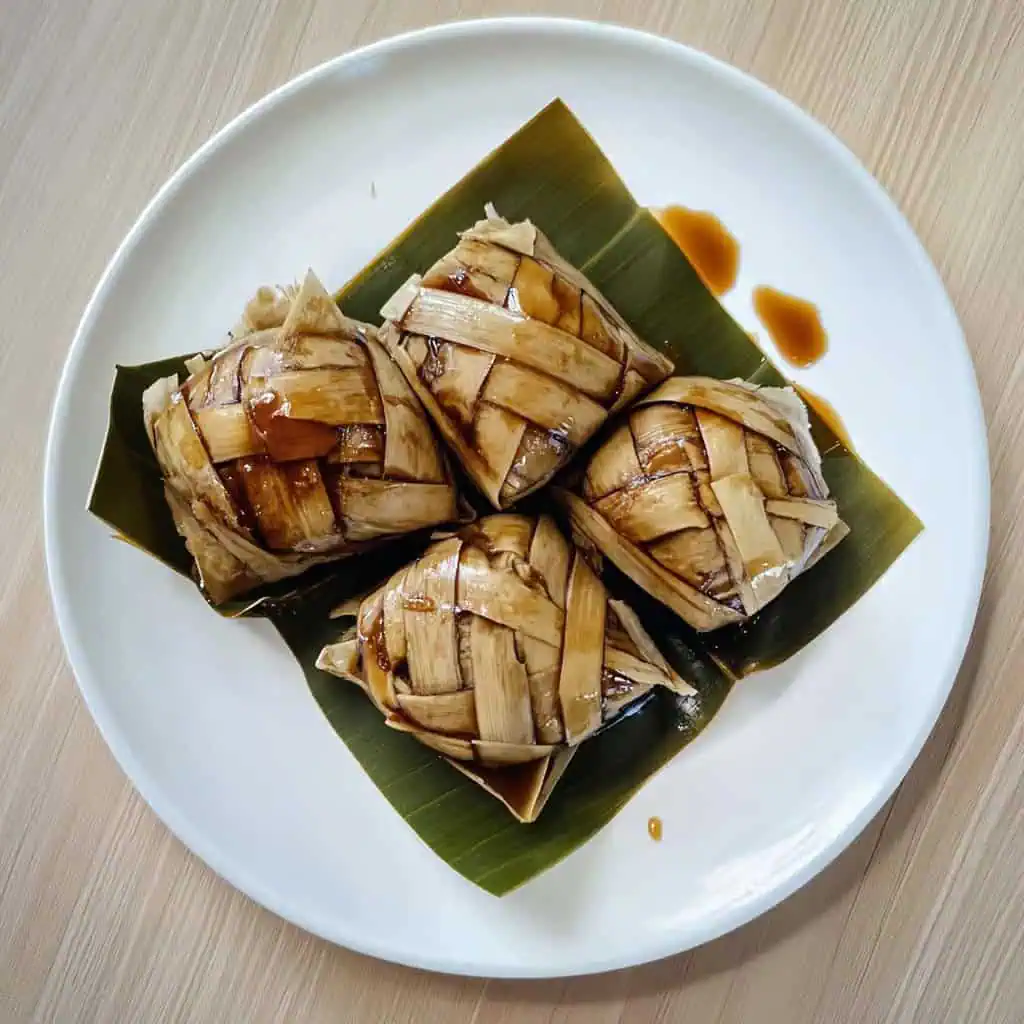
FAQ
Why is it called both Sinambong and Patupat?
Sinambong is the Tagalog name, while Patupat is the Ilocano term. Different regions in the Philippines often have their own names for the same traditional food, reflecting the country's diverse linguistic heritage.
Can I use store-bought sugarcane juice?
Fresh is preferred for authentic flavor, but pure bottled juice works if needed. Avoid juices with added preservatives or sugar as they will alter the taste and texture.
How do I know when the rice is fully cooked?
Rice should be soft and translucent when pressed through the pouch. If you're unsure, you can open one test pouch – the rice should be evenly cooked with no hard center.
Can I make this without weaving pouches?
The weaving is traditional and essential for authentic texture and flavor. The leaves impart a unique aroma while the weaving pattern allows just the right amount of syrup absorption.
Why hang the pouches to dry?
This creates the perfect consistency and prevents sogginess. The draining process allows excess syrup to drip off while leaving just enough to coat the rice, resulting in that signature sheen and balanced sweetness.
Do I need to wash the glutinous rice before cooking?
Unlike regular rice preparations, Sinambong traditionally uses unwashed glutinous rice. The natural starch helps bind the rice together during cooking.
How long does it take to master the leaf-weaving technique?
Most people can create functional pouches after 3-4 attempts. For the intricate traditional diamond patterns, expect to practice for several days before achieving consistent results.
Can I reduce the cooking time using modern equipment?
While pressure cookers might seem tempting, they won't allow for the slow infusion of the sugarcane flavor. The lengthy cooking process is essential for developing the authentic taste.
Related
Looking for other recipes like this? Try these:
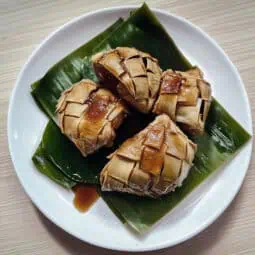
Authentic Ilocano Sinambong (Patupat) Recipe
Equipment
- Large carajay or heavy-bottomed pot (for boiling sugarcane juice)
- Bamboo splices (for securing pouches)
- Fine-mesh strainer (for removing impurities from sugarcane juice)
- Heat-resistant tongs (for handling hot pouches)
- Cooling rack (for draining)
- Sharp knife (for preparing leaves)
- Clean kitchen twine (optional backup for securing pouches)
Ingredients
- 5 cups glutinous rice malagkit (Filipino: bigas malagkit / Ilocano: diket)
- 15 cups fresh sugarcane juice Filipino: katas ng tubo / Ilocano: digos ti unas
- Young coconut leaves or buri leaves for wrapping Filipino: dahon ng niyog / Ilocano: bulong ti niog
Instructions
- First, clean your coconut or buri leaves by wiping them with a damp cloth. Weave these leaves into pouches about the size of your palm, leaving a small opening at one end. Make sure your weaving is tight so the rice won't fall out when cooking.
- Fill each woven pouch halfway with uncooked sticky rice. Don't overfill - the rice needs room to expand. Tie each pouch closed with a tight knot using the extra leaf at the opening. Group several pouches together and secure them with bamboo strips.
- Get your large pot ready and pour in the sugarcane juice. Bring it to a strong boil over medium-high heat. As it heats up, you'll see some particles floating on top - remove these with a strainer to get a clean syrup.
- Lower your rice pouches into the boiling sugarcane juice. Make sure they're completely covered by the liquid. Let them cook for one hour. You can check if the rice is done by gently pressing the pouch - it should feel soft, not hard.
- Keep cooking the sugarcane juice until it gets thicker and turns a golden brown color. This will make your Sinambong sweeter. Put the cooked rice pouches back into this thickened syrup and cook for another 30-50 minutes on low heat.
- After cooking, lift the pouches out carefully and hang them up to let the extra syrup drip off. Leave them hanging for about 15 minutes. You can use the extra leaf strip you left during weaving to hang them.
- Let your Sinambong cool down for 30 minutes before eating. When you unwrap them, they should be shiny and slightly chewy - perfect for sharing with family and friends.
- Remember: Patience is key when making Sinambong. Take your time with each step, especially the weaving and cooking in syrup. Your effort will be rewarded with a delicious, traditional Filipino treat.
Tips from Lola's Kitchen
- Select young, pliable leaves for easier weaving
- Soak leaves briefly in warm water to increase flexibility
- Test rice doneness by gently pressing through the pouch
- The syrup should coat the back of a spoon when ready
- Traditional preparation starts early morning when leaves are freshest
Nutrition
The Story Behind Sinambong (Patupat)
Deep in the sun-drenched provinces of Northern Luzon, particularly in Ilocos, La Union, Isabela, and Pangasinan, Sinambong (known locally as Patupat) stands as a testament to Filipino ingenuity and resourcefulness. This beloved kakanin emerged during the Spanish colonial period when sugarcane plantations dotted the Ilocano landscape, providing the essential ingredient that gives this delicacy its distinct sweetness.
The art of making Sinambong began with the Ilocano farmers who worked in these vast sugarcane fields. After extracting juice for commercial purposes, they would save some to create special treats for their families. They ingeniously combined this pure sugarcane juice with sticky rice, wrapping the mixture in intricately woven buri or coconut leaf pouches – a craft passed down through generations of Ilocano artisans.
What sets Sinambong apart from other Filipino rice cakes is its unique cooking process. Unlike other kakanin that rely on added sugar, Sinambong derives its sweetness entirely from natural sugarcane juice. The diamond-shaped pouches hanging to dry after their sugarcane syrup bath have become an iconic sight in traditional Ilocano kitchens, particularly during festivals and special occasions like the Kannawidan Festival, where locals showcase their expert weaving and cooking techniques.
Today, while modernization threatens many traditional Filipino delicacies, Sinambong remains a proud symbol of Ilocano culinary heritage. Local families still gather to prepare this labor-intensive treat, with elderly relatives teaching younger generations the precise art of leaf-weaving and the patient process of achieving the perfect sugarcane syrup consistency. This dedication to preserving authentic methods ensures that each bite of Sinambong carries not just sweetness, but also the rich history of the Ilocano people.
The term 'Sinambong' itself reveals the dish's cultural journey – known as 'Patupat' in Ilocano and 'Sinambong' in Tagalog, these names reflect how this delicacy has transcended regional boundaries to become a cherished part of Filipino food culture. Whether enjoyed as a morning treat with hot coffee or as afternoon merienda with ginger tea, Sinambong continues to captivate both locals and visitors with its unique preparation method and natural sweetness.
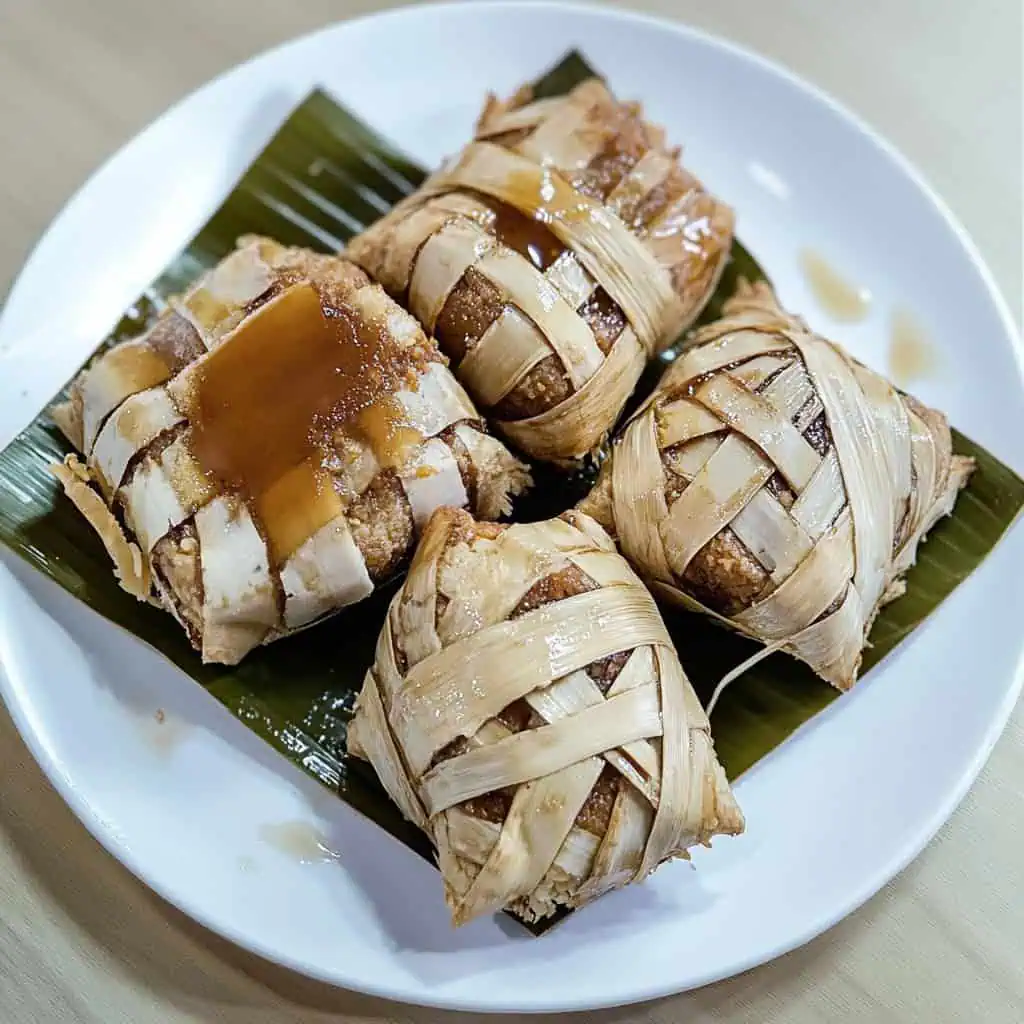







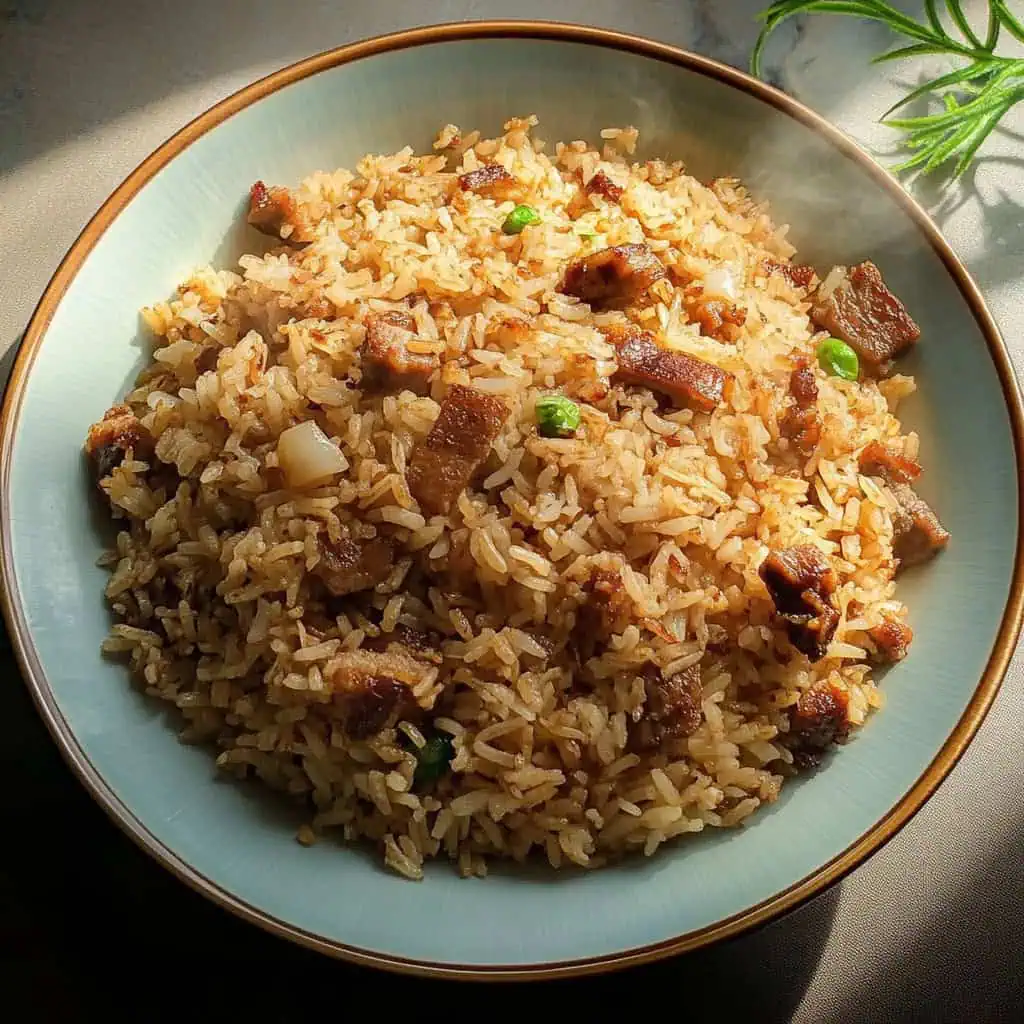
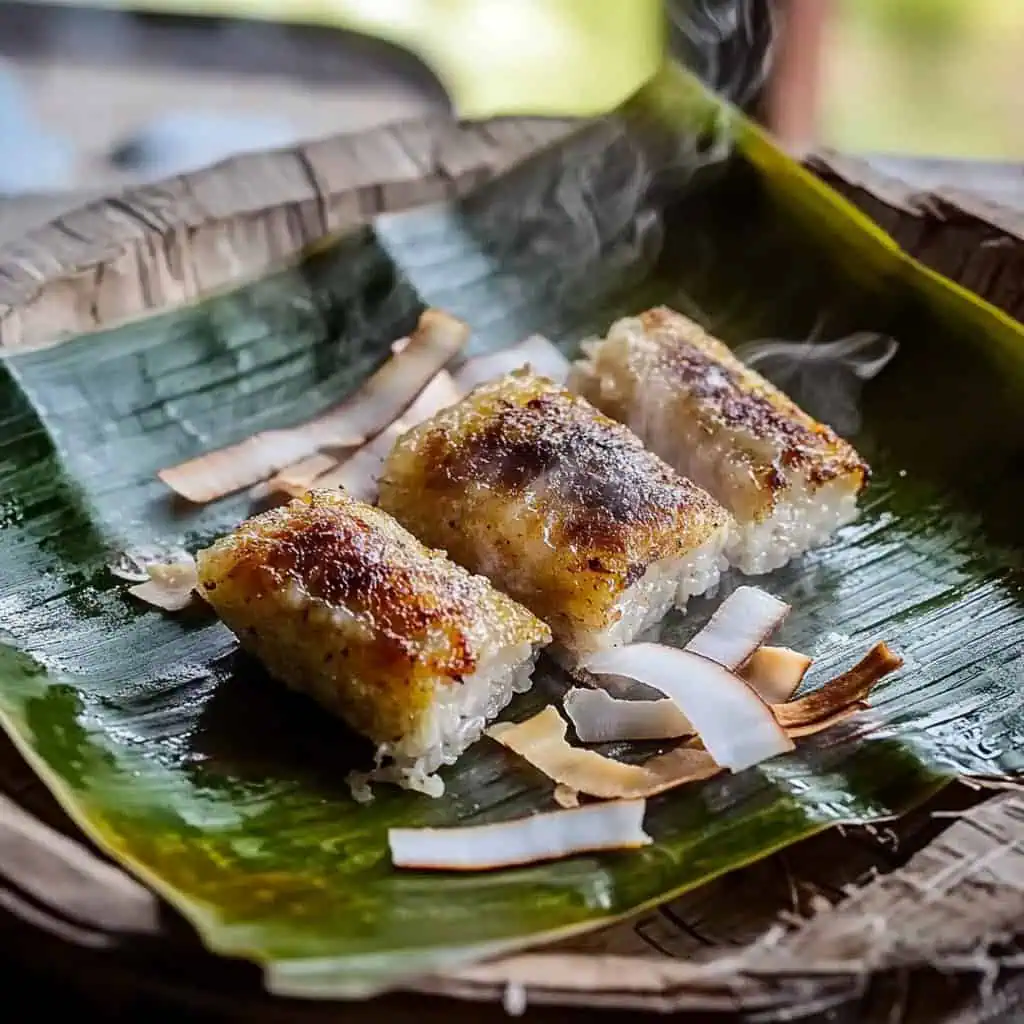
Comments
No Comments